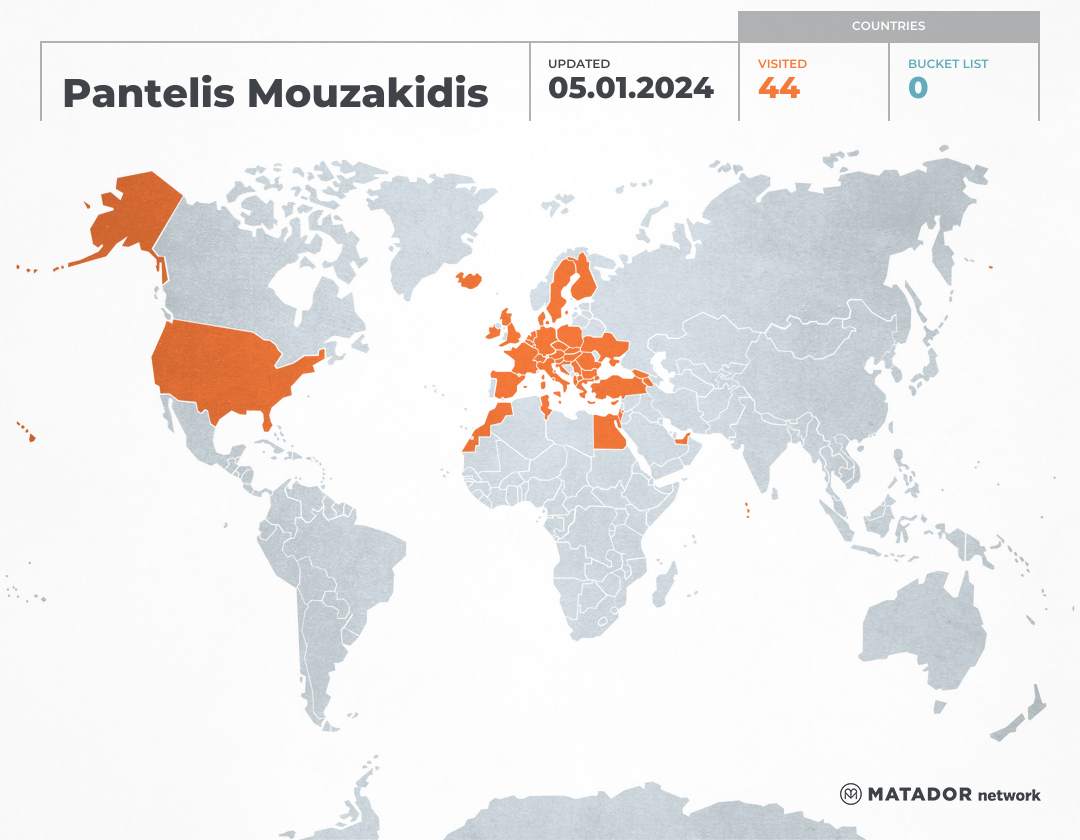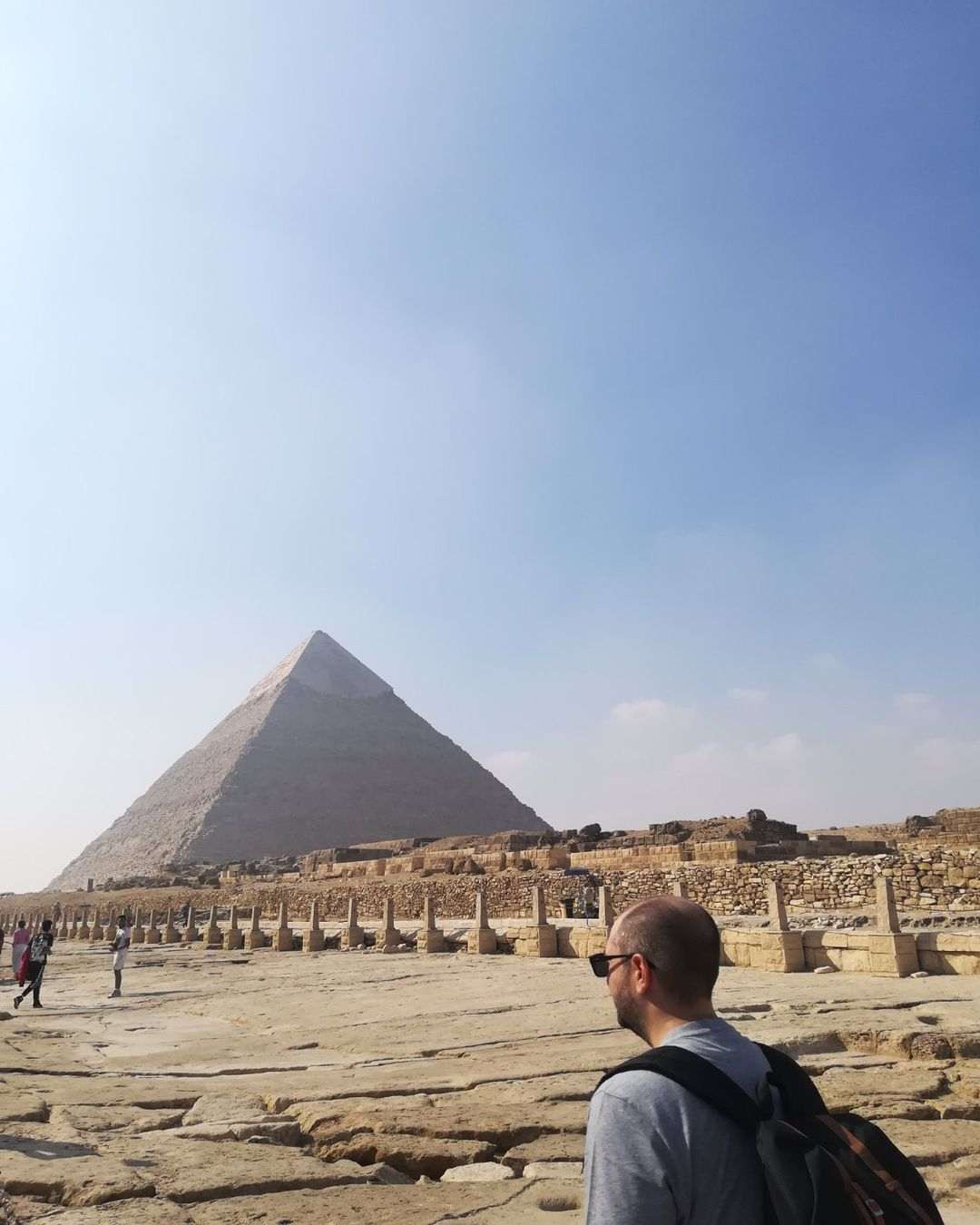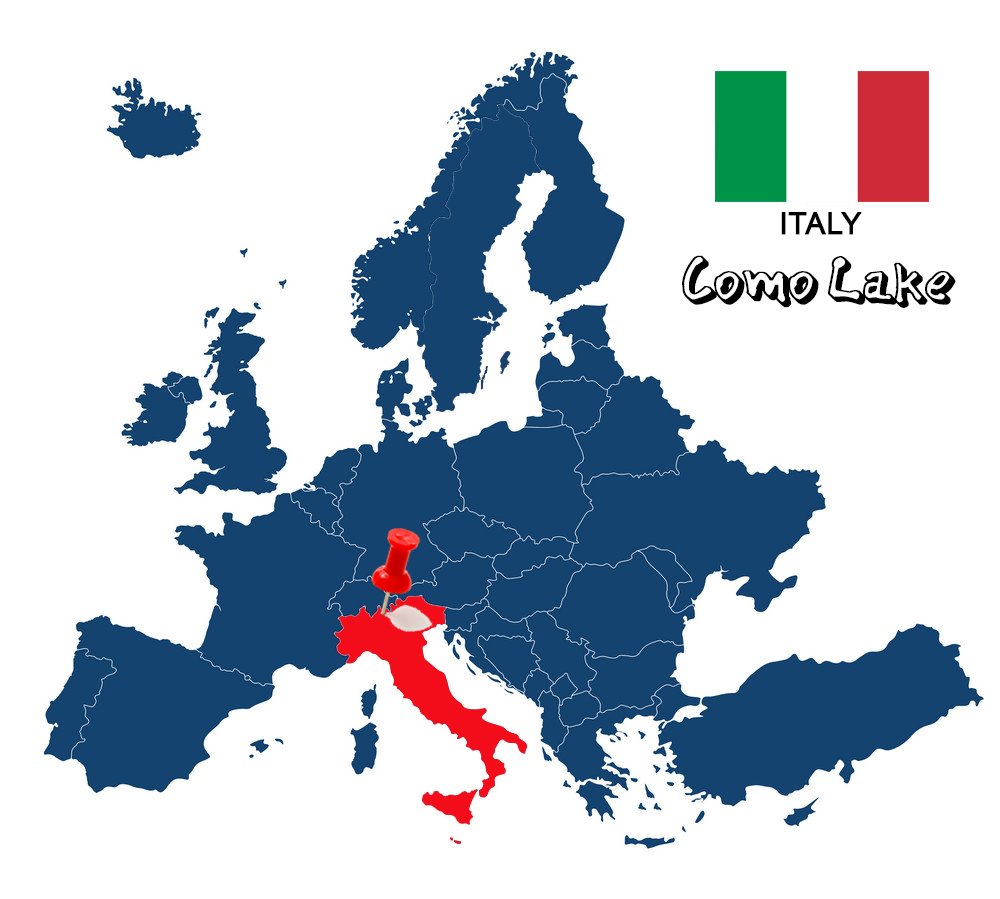
The Lake Como area is a blessed place with the serene "protagonist", being one of the most romantic parts of Europe, surrounded by almost vertical overgrown slopes, while in the background stands the imposing Alps. Looks like a painting, in which people added some finishing touches with aristocratic villas, picturesque villages and Victorian gardens, creating a work of art of incomparable beauty. In the 19th century, the composer Franz Liszt wrote to his friend and author Louis de Ronchaud "when you write a story of two happy lovers, place them on the shores of Lake Como. I don’t know other place so blessed by the heavens"! Who can say he was wrong;
A few words about the city
Lake Como is definitely Italy's most popular lake and became even more popular when George Clooney decided to buy a house there. It is a glacial mineral lake, located in Lombardy, northern Italy, near the border with Switzerland and is named after the homonymous village. It covers 146 square kilometers and is the third largest in the country after the Garda and Maggiore lakes. Its maximum depth is more than 400 meters, making it one of Europe's deepest lakes. The lake has been a popular tourist destination since the Roman times and many villas have been built on its banks, giving it a more “glamorous” look. At times has been a source of inspiration to many writers, poets and composers, as it offers a unique sense of romance in a landscape of unique natural beauty! So I'll try to show you the top places around Lake Como, which you should definitely visit if you are there for the first time.
Como
I had to start my report from the village from which it derives the name of the lake, Como. Como as a community has a population of almost 84,000 inhabitants, while the entire region has about 584,000 inhabitants. Due to its strategic location, this placwe has always played an important role in Lombardy and was a center of commerce and trade during the Middle Ages, while it was fully incorporated in the Kingdom of Italy in 1859.
Walking by the lake, but also inside the picturesque town, you will be able to admire some of its attractions and carry out some activities that will confront you with the beauty of Como.
Once you reach the city, either from the train station or via the main road, you will find yourself in a large park, the gardens of the Voltiano (Giardini del Tempio Voltiano). It is a place full of green, theme parks and benches ideal for gazing at the lake. Right next to, there is a building that resembles an ancient Greek temple (Tempio Voltiano) and is dedicated to Alessandro Volta, a productive scientist and inventor of the electric battery, born in Como. Inside you will find a collection of scientific instruments used by the physicist, including the early voltaic piles (batteries), while on the first floor are presented his personal belongings and awards. Entrance costs 4e. Continuing towards the pier, you will see a huge and impressive creation, the Life Electric, also dedicated to the Italian scientist. From there you will have, in my opinion, the best view of the city.
The heart of Como beats in Piazza Cavour, the area where the most cafes, restaurants and hotels are in the city. A few meters from there is the most important attraction of the city, the Cathedral of Como (Duomo di Como), which is dedicated to the Assumption of the Virgin and dates back to the 14th century. It is even said to be the last gothic cathedral built in Italy! It was built on the ruins of an earlier Romanesque cathedral dedicated to Santa Maria Maggiore, 10 years after the founding of Milan's cathedral, but the present form with its stone statues of the frontage and the characteristic small towers, just got it in the 18th century.
You will also have to stroll through the Palazzo Giovio, which houses the Archaeological Museum of the city (Museo Archeologico Giovio). There is a fantastic collection of pottery, jewelry, farm machinery and other interesting finds from the ancient Greek era, that present a truly fascinating view of the history of Como and its people over the years. The entrance costs 4e.
Finally, some other beautiful buildings and attractions worth seeing up close are the theatre of the city (Teatro Sociale), the Basilica of St. Abontium (Basilica di Sant'abbondio), the Basilica di San Fedele, the walls and Roman Baths, as well as the Tomb of Alessandro Volta.
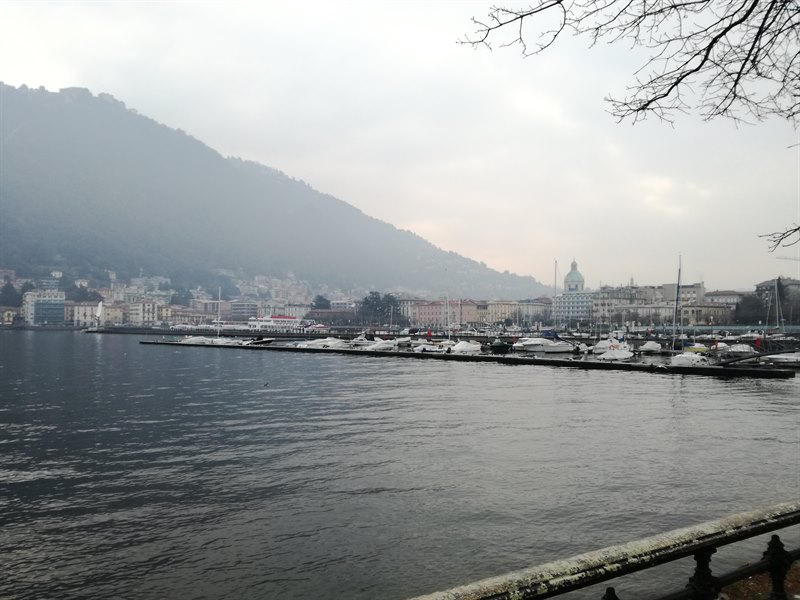
Brunate
Using the famous “funicolare”, which means cable car in Italian, you will be taken to the"balcony of the Alps", the Brunate. The transition is a bit steep but very exciting and worth trying. However, if you are scared, you can reach the village on foot, as there are two paths through the forest. The first is parallel to the cable car and the second passes through the Hermitage of San Donato, founded by the Benedictines in the 15th century. On the hill there are splendid art nouveau villas, which were built from the late 19th until the early years of the twentieth century, from the new rich and middle classes, who sought to "make" names. Floral patterns and selective elements represent the taste of the owners in a time of luxury.
Cernobio
Cernobio is one of the most famous resorts on the shores of Lake Como and at the foot of Mount Bisbino. You can reach it either by boat, usually in the tour from Como is first stop, or on a beautiful 40 minute walk. This route is called the "mile of knowledge", since it is a green and cultural corridor of great natural beauty in a unique landscape. On its banks there are some rare beauties, such as Villa d'Este and Villa Erba, which is now an exhibition centre, Villa Bernasconi and Villa Pizzo. From Cernobbio you can proceed to the Sanctuary of the Virgin Mary on top of mount Bisbino, realizing a scenic route that offers stunning views of the lake.
Bellagio
The most famous, and for many the most beautiful, place around Lake Como is the lush cypress town of Bellagio. The distance by boat is approximately 45 minutes from Como, but you can reach it also with the local bus (more than an hour) and costs 3e.
Wear a pair of comfortable shoes and stroll through the tiny, bustling streets of the old town and the bustling Giuseppe Garibaldi Street, with dozens of restaurants and shops selling all local products. In the center of the city, dominate the church square (Piazza della Chiesa), where you will find the Basilica of San Giacomo, a Romanesque church built between the 11th and 12th century.
After walking to the romantic part of the lake, Lungo Lario Manzoni, you will reach the world-famous Villa Serbelloni, a luxury hotel built in the 15th century and currently owned by The Rockefeller Foundation. Unfortunately, if you are not a guest of the hotel, you cannot visit the interior. However, you can make a visit and enjoy a stroll in the 50 acres of park and gardens surrounding the villa and believe me it's worth it.
Finally, a stroll around the Villa Melzi is definitely one of the best things you can do when you are in Bellagio. The villa, which is open from March to October, was built between 1808 and 1810 under the command of Francesco Melizzi Eryl, Duke of Loi, and the gardens were designed by Luigi Canonica and Luigi Villoresi. The park hosts a large number of exotic trees, camels, rhododendrons and azaleas, among others. Here guests can choose between different routes, as these gardens gather many elements of artistic, cultural and historical interests. The entrance costs 6.50e.
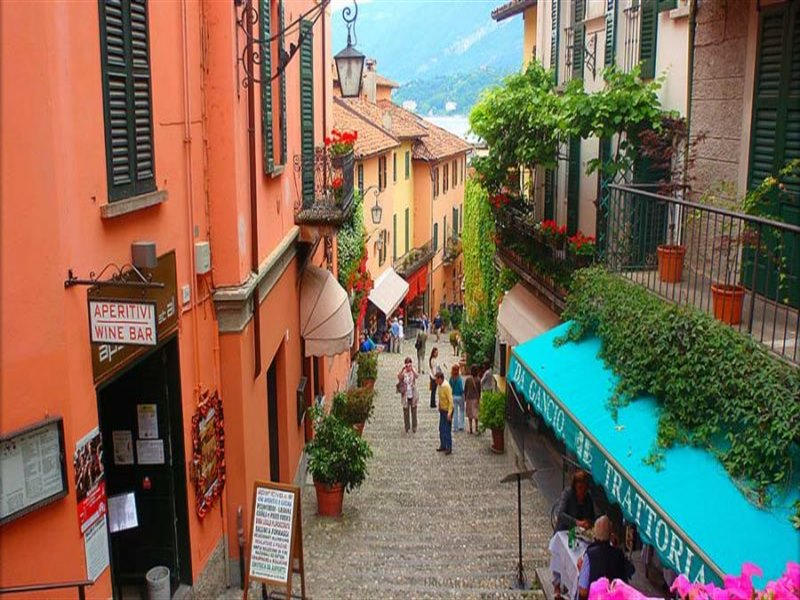
Menaggio
In the middle of the lake, we find the picturesque Menaggio. Upon arrival, you may want to get to know the city the way a local would. In that case, start your tour of Via Calvi and take a look at the small boutiques and artisan shops, selling local products such as food, shoes, clothes and home accessories.
As you walk, beware of the Church St. Marta (Chiesa di Santa Marta), which you will find in the middle of the road. Take some time to visit the interior of the church and admire the ancient paintings dating from the 17th century. Continuing your walk to Lake Como, you will reach Piazza Garibaldi, a fantastic place to sit for coffee or ice cream, enjoying a stunning view of the world's most beautiful lake.
The upper part of the city still retains a medieval appearance and is characterized by narrow alleys, steep stairs and stone buildings. If you want to visit the oldest part of Menaggio, head out to Via Castellino da Castello and walk along the huge perimeter walls that once bordered the ancient castle, but now are ruins. Enter its strait and admire the scenic bridge over the Senagra stream, enjoying the sound of the waterfall.
Finally, the Menaggio hosts the beautiful Villa Mylius Vigoni, definitely one of the best things you can see there. The villa was built in the first half of the 19th century and is surrounded by a large English garden, with stunning views of Lake Como, creates a natural environment of rare beauty. The villa is currently home to the German-Italian Center of European Excellence, a high-level conference center that 'aims to promote Italian-German dialogue in a European and global context.
Varenna
Just across Menaggio, on the east side of the lake, we meet Varenna. Varenna is a necessary stop for those who wish to visit one of the most characteristic and peaceful cities of the lake. In the center of the village is the square of St. George (Piazza San Giorgio), with the homonymous church (Chiesa di San Giorgio). The church was built in the 14th century in style somewhere between Roman and gothic, hosting many paintings from the late 15th and 16th centuries. Looking directly below, you will see the solid pavement, made entirely of local marble.
Do not miss a narrow alley called Contrada dei Sarti, where you will have the opportunity to meet the Pelletteria Denti. It is a very distinctive leather shop, where you can buy something special to take home (all purses, belts and wallets are made in Italy).
A visit to Villa Monastero is definitely a must. The villa was once an old monastery, which later became a patriotic residence. Apart from being an international conference centre, Villa Monastero attracts tourists from all over the world, due to its beautiful botanical garden, which gathers many rare plant species. Visiting this famous villa, you will also have the chance to see the Casa Museo, a museum that brings together four centuries of history in an elegant setting, featuring sophisticated decorations and furnishings. Keep in mind that Villa Monastero is open to the public only from March to November.
Next to Villa Monastero is Villa Cipressi. The complex is surrounded by cosmopolitan gardens that reach the shores of the lake. The name of the villa comes from the beautiful and ancient cypress trees that exist in its gardens. Unlike Villa Monastero, this villa is today a luxury hotel. Then, if you don't mind walking, you can follow the path along the river Esino and reach Castello di Vezio, an ancient medieval fortress overlooking Varenna. The castle houses a permanent exhibition dedicated to Lariosaurus, an extinct reptile from ancient times, which brought to light a myth similar to that of the Loch Ness monster, as well as a centre for the training of birds of prey.
Finally, a few kilometers south of Varenna there is a location called Fiumelatte, where a river of the same name flows. The Fiumelatte River is quite strange, except for its white appearance, which looks like running milk, this small river flows only between March and September, and is completely dry during the other months.
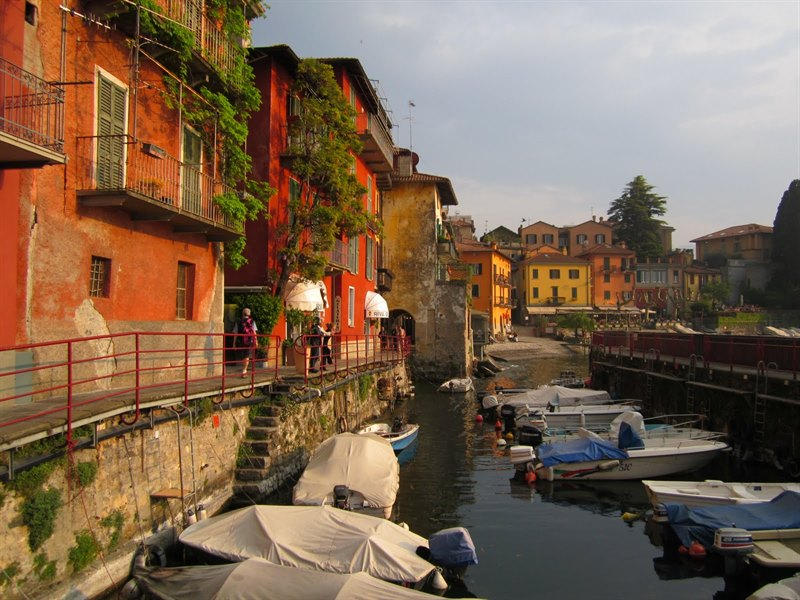
Lecco
Looking at the lake on the map, you will realize that it does not look like classic round or oval lakes, but it has a curious shape, which personally reminds me of a woman in gait. So assuming the first leg is where Como is, in the other leg is Lecco. Lecco is one of the most photogenic places around Lake Como, which is even directly connected by rail to Milan. Most tourists, however, choose Como, as I said above, as the beginning of their exploration.
The heart of the city is located right on the lake, where two squares connect together as one, the Piazza XX Settembre overlooks the water, while the Piazza Cermenati, towards a series of small narrow streets. The first is "playful", with a large fountain, which children love to dive into on hot days. There is one of the biggest attractions in Upper Lombardy, a real headquarters of major international negotiations on Iron, Silk and wood. This is a market, that even the plague in 1630, did not prevent its operation. In Lecco you will find another beautiful neoclassical, the Palazzetto del Pretorio or as locals call it “the Palace of Fears” (Palazzo delle Paure), a neo-Gothic rebuilding of Dogana (customs) over the ruins of the Medieval Town Hall, with the Visconti coat of arms still visible. Don't miss the church of St. John (San Giovanni), the first temple of Lecco, built in the 10th century, as well as the baroque church of St. Martin (Chiesa di San Martino) and the Roman basilica of St. Nicholas (Basilica di San Nicolo) with the tall bell tower.
How to go
Obviously there is no airport around the lake, so you have to reach it either by train or with your own car, from a nearby town. The most convenient cities are Milan (Italy) and Lugano (Switzerland). As we have seen in a previous article, in Milan there are three airports Bergamo, Malpensa and Linate. The most economical option for travelling in Milan is that of Ryanair (Bergamo airport), with the proper planning, you can find tickets starting from 40€ (!) round trip. Then you can buy a train ticket from Milan central station or online from the Trenitalia website, which costs approximately 8€ round trip and you will reach Lake Como in about 20 minutes. If you are considering approaching it via Lugano, then things are more complicated as there is no direct flight from Thessaloniki to the Swiss capital, so you will need combined flights.
Where to stay
The truth is that staying at Lake Como is particularly expensive, since it is considered as a rich tourist resort. So I would recommend avoiding the more touristy places like Como and Bellagio and looking for something in the surrounding villages. A good choice is Albergo Europa, in Varenna, which offers good value for money, in one of the most beautiful places in the region.
How to move
To get around the small villages on the Lake, you will definitely need to take one of the boats that are anchored to the Como pier. Various packages are offered depending on the length and distance of the tour you choose. You can also reach the nearby villages by buses, which serve the whole area, saving money but wasting time, as the itineraries are not very regular. In the villages I think that you won't need any means of transport, since the magic of the whole scenery needs walking to discover it.
What to eat
The region is famous for its very tasty wines, which can be found at affordable prices. Since you are in the Italian north, you should also try its specialties, which focus around pasta and meat. A great choice to do is La Vita e Bella, a great restaurant in Como that will surely amaze you. The menu is written on the wall, featuring about 50 (!) different salads and a wide variety of appetizers and pastries.
Useful information

In Italy we travel with a passport or a new type of Police Identity Card, where the information is written in Latin characters.
In Lake Como the language used is of course Italian. But most, if not all, speak English, so ask for clarification in English.
The currency of the country is the euro.
Lake Como is an hour behind Greece (GMT +2).
In Lake Como there is no Greek Embassy or Greek Wage Consulate, so if you need anything you should contact the nearest, which is located in Milan, in the street, Foro Buonaparte, 48, 20121, and the phone is +39 02 8050 0559.
The train station of Como is quite near the Lake, so you can easily reach it on foot, admiring the lovely scenery approaching, or use one of the local buses.
Lake Como is a purely spring-summer destination, so be sure to choose this time of year. Otherwise, you will be surprised, since most shops, restaurants, cafes and any sights are usually closed.
Recommended excursions → Milan, Lugano, Bergamo
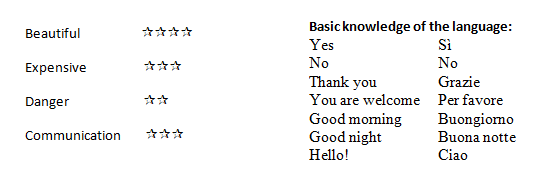
If this article seemed interesting or contributed to your quality information, then you can like my facebook page: o_thessalonikios or follow me on instagram!
Mouzakidis Pantelis


































